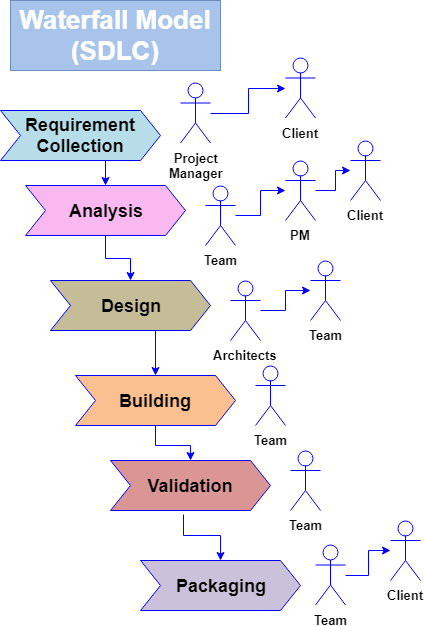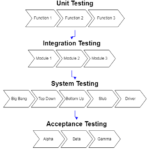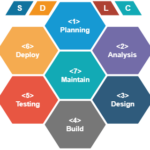Are you curious about the most successful software development model, the Waterfall Methodology? Let’s take a deep dive into this step-by-step approach that has stood the test of time.
As the name suggests, the Waterfall model resembles the flow of a river, with each stage progressing sequentially. This approach guarantees success when dealing with small projects that have clear requirements and fewer unknowns.
The Waterfall model gained popularity in the late 1970s when Winston Royce used it to reduce the high cost of releasing new revisions of a product. With this approach, he was able to deliver products quicker, at a lower cost, and with less effort.
The Waterfall model has a clear structure where the first stage focuses on requirements gathering, followed by design and actual development. None of the stages overlap, ensuring that progress is made steadily and efficiently.
Let’s learn more about this powerful approach and see how it can transform your software development process!
Waterfall Methodology Lifecycle
The waterfall model life cycle consists of the following six stages:

1. Requirements:
In this stage, the emphasis is on collecting the expectations and goals of the project. The risk assessment also happens alongside.
2. Design:
Once there is agreement on the requirements of the project, the team can begin work on finalizing the core structure of the product.
The architects who are senior members of the team study the requirements and prepare a blueprint for the programmers to work on a schedule for meeting the goals.
3. Building:
Here, primarily the development/coding/implementation takes place. The developers also perform unit testing of the modules.
4. Validation:
In this phase, the product goes through stress testing, the testers hunt for bugs and ensure that the software fulfills the customer’s requirements.
5. Packaging and Installation:
Once the testing team certifies the products through validation, the product gets packaged as per the agreement signed. After this, an additional cycle of testing and validation takes place.
6. Maintenance:
The software enters into the maintenance stage after releasing to the customer. This phase runs based on the agreement where the client gets continuous support and expects bug fixes if encountered.
Advantages of the Waterfall Methodology
The waterfall primarily recommends investing the bulk of the time, capital, and energy upfront: 20-40% in the first two stages, 30-40% on the development/coding, and the remaining spend on the implementation and maintenance.
- It is useful for projects which give more priority to quality than to the cost or the time duration.
- Suitable for projects which are easy to implement and don’t need a lot of resources and effort.
- The stability of the model makes project management easier.
- Both the customers and project managers can actively monitor the progress at any stage of development.
- Since all phases occur without any overlap, hence it reduces the project’s complexity.
- Flexibility in communicating with clients, especially when any critical requirements need a design discussion.
Disadvantages of the Waterfall Methodology
Every model has come with its limitations; hence, it may not work the same for every project. The waterfall methodology suits the best projects when there are clear requirements and no ambiguity, the size is short, and all stakeholders agree on the technology used. But it also comes with some disadvantages which are as follows:
- Not appropriate for long-duration or large-scale products.
- Lower flexibility in the process indicates that the project may face difficulty when there are high-level changes in requirements.
- Since the next stage is dependent on the outcome of the previous step, hence even a small change in the project scope can pose a big challenge.
- Some of the projects won’t follow the workflow laid down by the Waterfall model. And some may even bring shocks and highlight the vulnerability of the methodology.
- If the customer requirements are not clear or not available early, then it could create significant complications later in the project lifecycle.
- Any modification or upgrade request for the hardware and software may have a higher impact on the development and lead to an escalation in the project timeline.
- The Waterfall process guides picking most of the work upfront which causes the delivery of the software very late in the project lifecycle.
- After the product gets to the validation stage, it makes it difficult to go back to the coding or the requirement phase to resolve something.
Whether you’re just starting out or a seasoned pro, we have a vast collection of tutorials that cater to all levels of expertise. From beginner-friendly tips to advanced techniques, our tutorials cover a wide range of topics that are sure to pique your interest.
- Agile Methodology in a Nutshell
- SDLC V Model – A Step-by-Step Guide for Beginners
- List Clear Method in Python
- Page Object Model Or Properties File – Which One Should You Use?
- Seven Types of Test Automation Frameworks
Thanks for choosing techbeamers.








